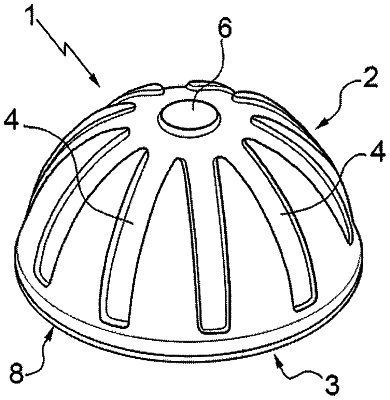| CPC A61F 2/30724 (2013.01) [A61F 2002/30672 (2013.01); A61F 2002/30677 (2013.01); A61F 2002/30879 (2013.01); A61F 2002/3425 (2013.01); A61F 2310/00221 (2013.01); A61F 2310/00353 (2013.01)] | 14 Claims |

|
1. An acetabular spacer device adapted to be implanted during use in a bone cavity placed at a joint of a human body, said acetabular spacer device (1) comprising:
a body made from polymethylmethacrylate and having,
a cup shape, substantially hemispherical,
an outer first surface (2), convex, and adapted during use to be positioned at said bone cavity, and
an inner second surface (3), concave, which defines a cavity (7); and
at least one pharmaceutical or medical substance, adapted to treat an ongoing infection in said bone cavity, provided within the body,
wherein said second surface (3) is adapted to be articulated with a further stem component present at said joint of the human body, or with a head of a stem component of a corresponding permanent prosthesis or spacer device of said joint of the human body,
wherein said outer first surface (2) comprises a plurality of elongated recesses or projections (4), that extend outward or inward with respect to said first surface (2), and that have a length (LU, LUa), a width (LA, LAa), and a height or depth (H, HA), and
wherein at least some of said elongated recesses or projections (4) have perimeters defining a linear segment or a trapezoidal shape and extend along said outer first surface beginning from a distance larger than zero, along a solid portion of said first surface (2), from an apex (6) of said first surface (2) and define first portions and second portions of said outer first surface, said second portions being recessed in relation to said first portions and to said apex.
|